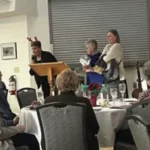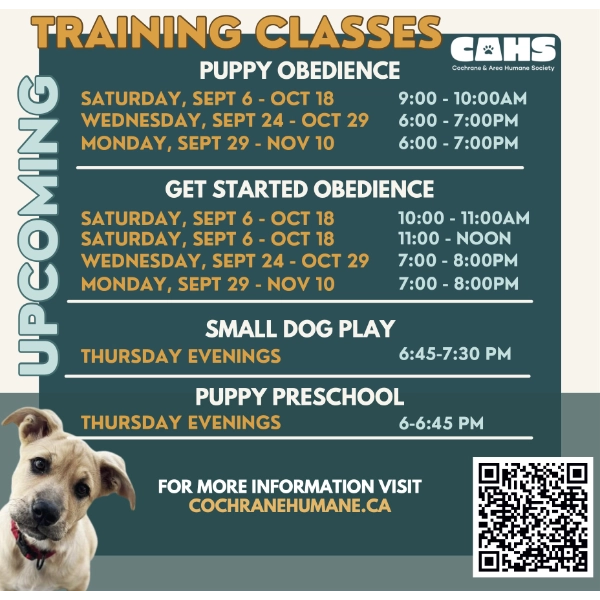Hello Banff-Kananskis! I hope you have been keeping cool and making the most of your summer. Usually, these monthly articles are an update of what my team and I have been up to, but I’ve been asked to provide a bit more substance. So each month, I will make my update shorter and provide more detail on a specific topic or project I’m working on.
Summer has been busy and I’ve been getting out across this riding as much as I can. From Indigenous Peoples’ Day events in Banff, and pancake breakfasts in Priddis and Exshaw, to BBQs in Waiparous and Bragg Creek Days, I’ve loved reconnecting with you and our beautiful home. This summer, you may have also met Kate and Dominique, our two new Summer Outreach Interns. There are so many fun events happening across our riding and I can’t be everywhere. Kate and Dom are here to help provide even more ways for you to connect with my office. I’m sure you’ll all welcome them to your communities as you have me. You’ll love their youthful energy and enthusiasm!
Recently the Minister of Forestry and Parks announced changes to the Alberta Wildlife Act Regulations that allow anyone with a hunting license to kill a grizzly bear that’s been involved in a conflict situation. These changes have incensed me for so many reasons, but mainly they don’t align with the best available science, they won’t work to reduce human-bear conflict, and they were passed silently and secretly without consultation with experts or the public.
Before being elected as your MLA for Banff-Kananaskis and becoming opposition critic for environment and tourism, I worked as a bear biologist and landscape ecologist in Alberta for nearly 20 years. I earned my master’s and PhD by applying biological and social science techniques to better understand how grizzly bears use the landscape around people and what kinds of management actions people supported as we move towards coexistence with these large carnivores. I even wrote a book about it called “What Bears Teach Us,” which showcases the incredible photography of John E. Marriott, and weaves science and stories from the field to promote human- bear coexistence.
I was directly involved in the grizzly bear recovery plan and played a key role in getting grizzly bears listed as threatened in 2010. I’ve had the fortune of working with some of the most internationally renowned bear biologists, who have worked in Alberta over decades to improve human- bear coexistence.
None of these experts or their works were consulted in creating these new regulations. The new regulations are not based on science, data, wildlife management principles, or any kind of expert recommendations. As such, they are deeply flawed.
The new regulations also won’t work to reduce human-bear conflict because they don’t get at the root of the problem. Bears are incredibly food driven and they are attracted to certain areas because of the availability of food, or attractants. When we remove a bear engaged in conflict, another will take its place, unless we also remove or secure the attractant.
Attractants can include improperly stored garbage, dead livestock, beehives, chicken coops and more. The most important solutions to address conflict are to work with communities and landowners to identify sources of attractants and then find ways to secure them. Electric fencing is helpful for chickens and bees, protective dogs can help with livestock, and education helps everyone. The Alberta Grizzly Bear Recovery Plan details many such recommendations, including the need to hire more Coexistence Specialists across the Province.
Rather than implement any of the recommendations in the Grizzly Bear Recovery Plan, the Minister has chosen to implement a solution that isn’t recommended anywhere.
Grizzly bears face numerous challenges in Alberta, including highway and train mortality, habitat alteration, poaching, and more. While instances of grizzly bears engaging in damaging conflict behavior, such as harming livestock, are rare, they do occur. In these cases, Fish and Wildlife officers may euthanize the bear; data shows this happens 2-3 times per year.
In Alberta, the Livestock Compensation Program plays a role in addressing wildlife- related damages. While this program is relatively user-friendly, it could be better. It’s not about choosing between having grizzly bears or livestock on the landscape; it’s about finding ways that supports both. Ranchers play an irreplaceable role in our society, providing essential and delicious food. By working together, we can implement measures that reduce conflict risks and support ranchers if conflicts do occur.
For those interested in learning more about the challenges and efforts surrounding grizzly bear conservation in Alberta, there are several news articles that have covering this issue. I was also on the Real Talk with Ryan Jespersen podcast on July 10th and the Breakdown podcast on July 24th. You could also watch the short film “In the Crosshairs: The Road to Recovery for Alberta’s Threatened Grizzly Bears”.
If this issue is concerning for you, please email Minister Todd Loewen and Cc me to share your views.
By leveraging scientific research, collaborating with landowners, and improving compensation programs, we can create a future where grizzly bears and humans thrive together on the Alberta landscape.
Sarah Elmeligi


























